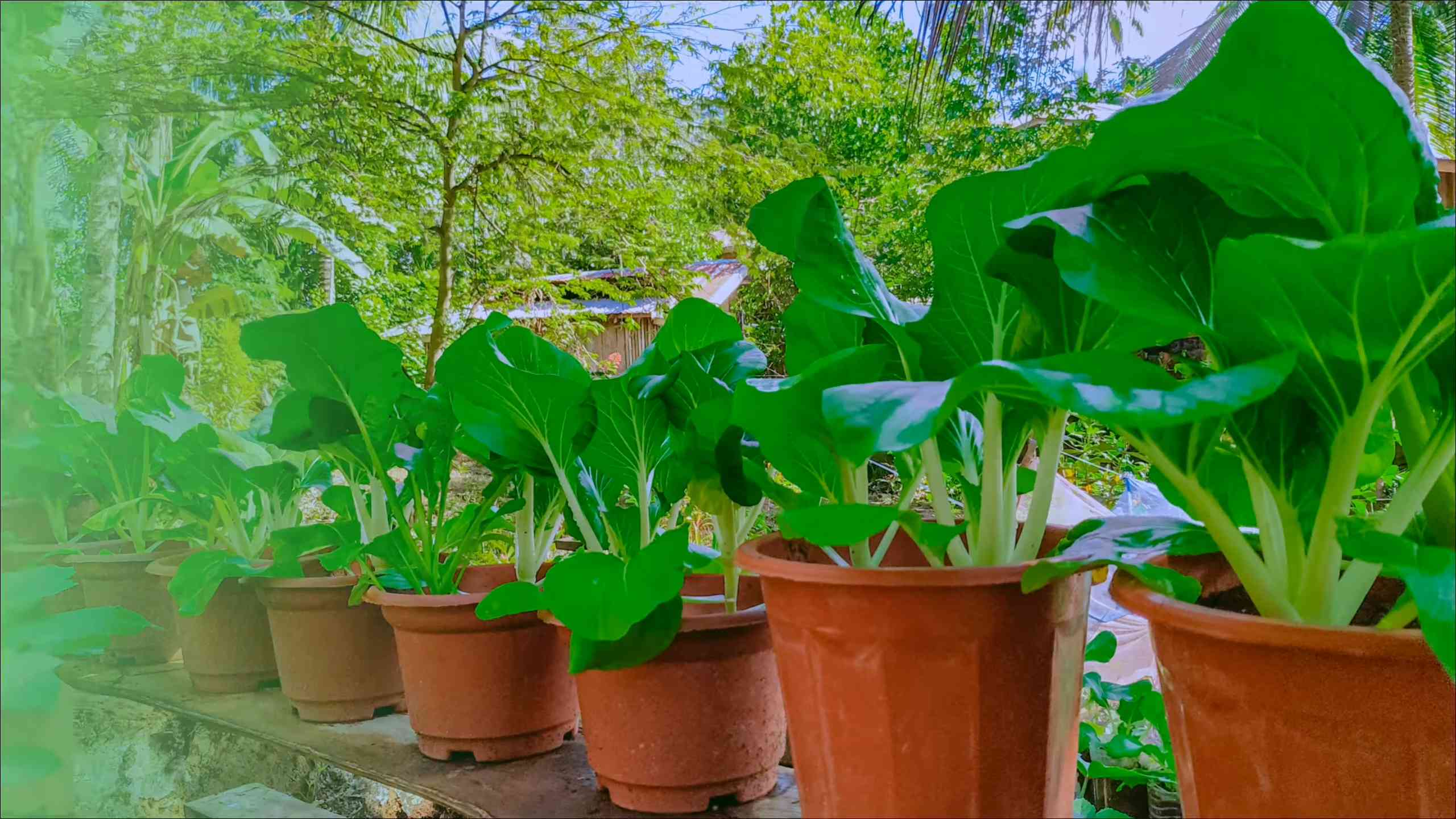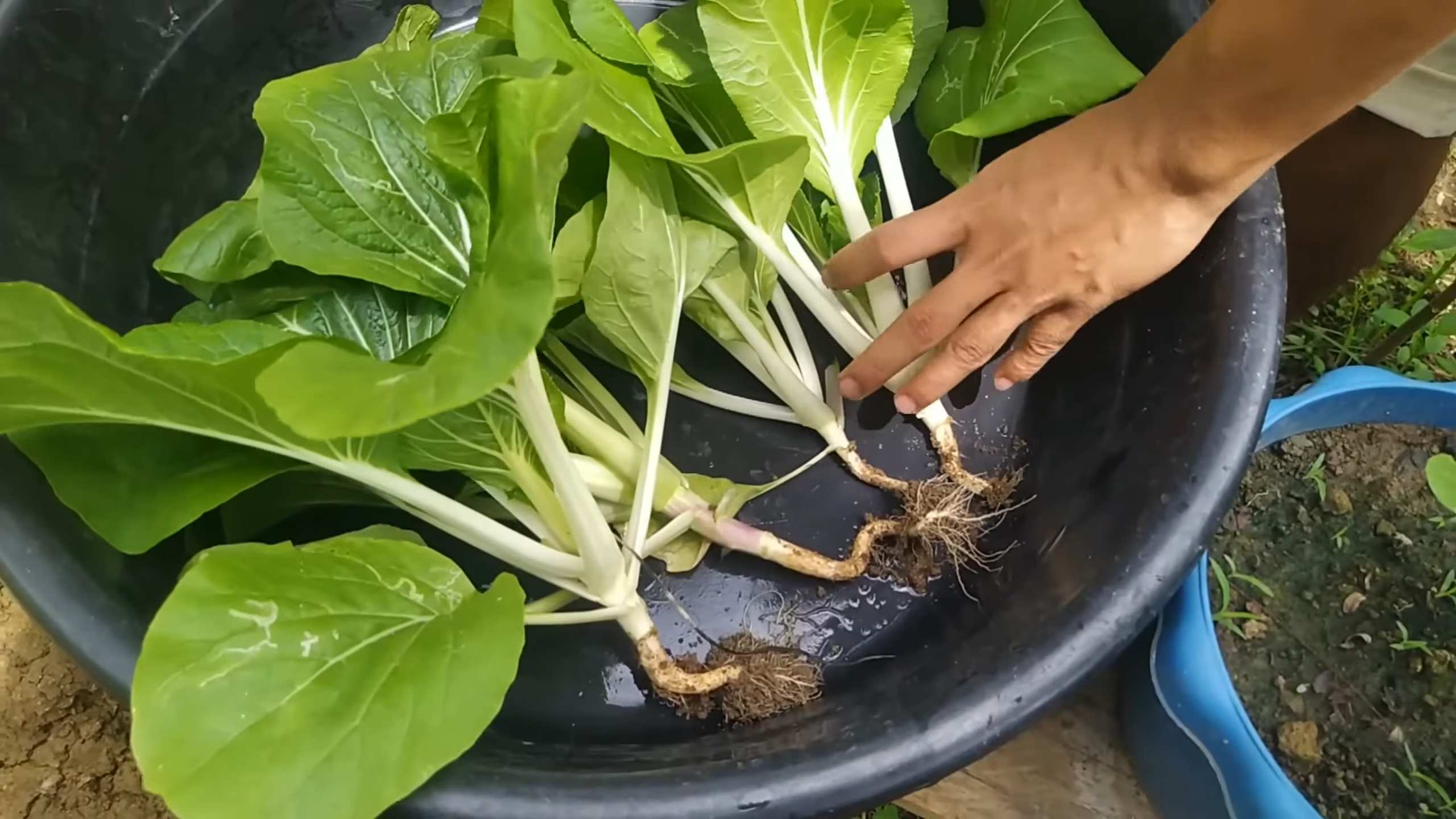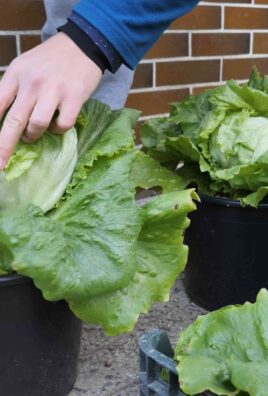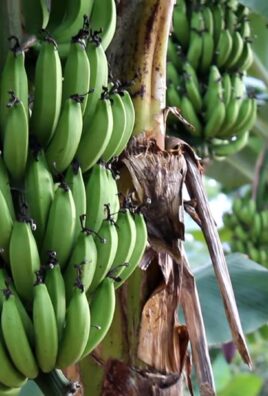Grow Pechay in Pots? Absolutely! Imagine stepping outside your door and harvesting fresh, crisp pechay for your dinner, all grown with your own two hands. That’s the beauty of home gardening, and it’s easier than you think, even if you’re short on space.
For centuries, cultivating your own food has been a cornerstone of many cultures. From ancient civilizations tending their herb gardens to modern urban dwellers embracing balcony farms, the desire to connect with nature and nourish ourselves with homegrown goodness remains strong. In many Asian countries, pechay, also known as bok choy, is a staple vegetable, deeply ingrained in culinary traditions and often seen as a symbol of good fortune and prosperity.
But why should you bother learning how to grow pechay in pots? Well, think about it: fresh, organic produce right at your fingertips, saving money at the grocery store, and the sheer satisfaction of nurturing something from seed to harvest. Plus, in today’s world, knowing where your food comes from is more important than ever. This DIY guide will walk you through every step, from choosing the right pot to harvesting your delicious, homegrown pechay. So, let’s get our hands dirty and start growing!

Grow Your Own Delicious Pechay in Pots: A Beginner’s Guide
Hey there, fellow gardening enthusiasts! I’m so excited to share my experience growing pechay (also known as bok choy) in pots. It’s surprisingly easy, even if you’re a complete newbie like I was when I started. Fresh, homegrown pechay is so much tastier than anything you can buy at the store, and it’s incredibly rewarding to watch your little seedlings grow into vibrant, leafy greens. So, grab your gardening gloves, and let’s get started!
Choosing the Right Pot and Soil
Before we even think about seeds, we need to set the stage for success. The right pot and soil are crucial for healthy pechay.
* Pot Size: Pechay doesn’t need a huge amount of space, but it does need enough room for its roots to spread. I recommend using pots that are at least 6-8 inches deep and 6-8 inches in diameter. You can grow one pechay plant per pot of this size. If you’re planning to grow multiple plants together, opt for a larger container, like a rectangular planter box. Just make sure to space the plants about 6 inches apart.
* Drainage: This is super important! Pechay hates soggy roots. Make sure your pot has drainage holes at the bottom to allow excess water to escape. If your pot doesn’t have drainage, you can drill some holes yourself.
* Soil: Forget using garden soil straight from your backyard. It’s often too dense and doesn’t drain well. Instead, use a good quality potting mix. I prefer a mix that’s specifically formulated for vegetables, as it usually contains the right balance of nutrients. You can also amend regular potting mix with compost or well-rotted manure to boost its fertility.
Planting Your Pechay Seeds
Now for the fun part – planting the seeds!
1. Prepare the Soil: Fill your pot with the potting mix, leaving about an inch of space at the top. Gently pat down the soil to remove any air pockets.
2. Sow the Seeds: Pechay seeds are tiny, so be careful not to plant them too deep. I usually make small indentations in the soil, about ¼ inch deep, using my finger. Place 2-3 seeds in each indentation. Planting multiple seeds increases the chances of at least one germinating.
3. Cover the Seeds: Lightly cover the seeds with soil.
4. Water Gently: Use a watering can with a gentle rose head to water the soil. You want to moisten the soil without disturbing the seeds.
5. Find a Sunny Spot: Pechay needs plenty of sunlight to thrive. Place your pot in a location that receives at least 6 hours of direct sunlight per day. A south-facing balcony or windowsill is ideal.
6. Keep the Soil Moist: The soil should be consistently moist, but not waterlogged. Check the soil moisture daily and water when the top inch feels dry to the touch.
Caring for Your Pechay Plants
Once your seeds have sprouted, it’s time to nurture your little pechay plants.
1. Thinning Seedlings: After a week or two, you’ll likely have multiple seedlings sprouting in each spot. Thin them out by snipping off the weaker seedlings at the base with a pair of scissors. Leave only the strongest seedling in each spot. This gives the remaining plant enough space to grow.
2. Watering: Continue to water your pechay plants regularly, keeping the soil consistently moist. Avoid overwatering, as this can lead to root rot. I usually water in the morning, so the leaves have time to dry before nightfall.
3. Fertilizing: Pechay is a fast-growing plant, so it needs plenty of nutrients. Start fertilizing your plants about two weeks after they’ve sprouted. I like to use a liquid fertilizer that’s specifically formulated for vegetables. Follow the instructions on the fertilizer label carefully. You can also use organic fertilizers, such as compost tea or fish emulsion.
4. Pest Control: Keep an eye out for pests, such as aphids, slugs, and snails. These critters can quickly decimate your pechay plants. I prefer to use organic pest control methods, such as hand-picking pests off the plants, spraying them with a strong stream of water, or using insecticidal soap. You can also try companion planting, such as planting marigolds near your pechay to deter pests.
5. Weed Control: Keep your pots free of weeds, as they can compete with your pechay plants for nutrients and water. Hand-pull any weeds that you see.
6. Sunlight: Ensure your pechay plants continue to receive at least 6 hours of direct sunlight per day. If you live in a particularly hot climate, you may need to provide some afternoon shade to prevent the leaves from scorching.
Harvesting Your Pechay
The best part of growing your own pechay is, of course, harvesting it!
1. When to Harvest: Pechay is typically ready to harvest about 45-50 days after planting. You can harvest the entire plant at once, or you can harvest individual leaves as needed. I prefer to harvest individual leaves, as this allows the plant to continue producing new leaves.
2. How to Harvest: To harvest the entire plant, simply cut it off at the base with a sharp knife. To harvest individual leaves, cut them off near the base of the plant, leaving the inner leaves to continue growing.
3. Storage: Freshly harvested pechay is best used immediately. However, you can store it in the refrigerator for up to a week. Wrap the leaves in a damp paper towel and place them in a plastic bag.
Troubleshooting
Even with the best care, you might encounter some problems along the way. Here are a few common issues and how to address them:
* Yellowing Leaves: This can be caused by a number of factors, including overwatering, underwatering, nutrient deficiencies, or pests. Check the soil moisture and adjust your watering accordingly. Fertilize your plants with a balanced fertilizer. Inspect the plants for pests and treat them as needed.
* Stunted Growth: This can be caused by a lack of sunlight, poor soil, or pests. Make sure your plants are getting enough sunlight. Amend the soil with compost or well-rotted manure. Inspect the plants for pests and treat them as needed.
* Bolting: Bolting is when the plant starts to produce flowers and seeds prematurely. This is usually caused by hot weather or stress. Once a plant bolts, the leaves become bitter and less palatable. To prevent bolting, try to grow pechay during cooler months. Provide afternoon shade during hot weather. Water your plants regularly to prevent them from becoming stressed.
Choosing Pechay Varieties
There are several varieties of pechay to choose from, each with its own unique characteristics. Here are a few popular options:
* Shanghai Green: This variety has light green stems and spoon-shaped leaves. It’s known for its mild flavor and tender texture.
* Mei Qing Choi: This variety has dark green leaves and pale green stems. It’s slightly more robust than Shanghai Green and has a slightly stronger flavor.
* Joi Choi: This variety is a larger, more mature type of bok choy. It has dark green leaves and thick, white stems. It’s often used in stir-fries and soups.
* Baby Bok Choy: This is simply a smaller, younger version of bok choy. It’s incredibly tender and has a mild, sweet flavor.
Tips for Success
Here are a few extra tips to help you grow the best pechay possible:
* Start with Quality Seeds: Buy your seeds from a reputable source to ensure they’re viable and disease-free.
* Succession Planting: Plant new seeds every few weeks to ensure a continuous harvest throughout the growing season.
* Rotate Your Crops: Avoid planting pechay in the same spot year after year, as this can deplete the soil of nutrients and increase the risk of disease.
* Enjoy the Process: Gardening should be fun! Don’t get discouraged if you encounter some challenges along the way. Just keep learning and experimenting, and you’ll be rewarded with a bountiful harvest of delicious, homegrown pechay.
Growing pechay in pots is a fantastic way to enjoy fresh, healthy greens right at your fingertips. With a little bit of care and attention, you can easily grow your own delicious pechay, even if you have limited space. So, what are you waiting for? Get planting!

Conclusion
So, there you have it! Growing your own pechay in pots is not only achievable, but it’s also incredibly rewarding. From the vibrant green leaves gracing your balcony or patio to the fresh, crisp taste in your favorite dishes, the benefits are undeniable. This DIY trick transforms even the smallest spaces into productive gardens, offering a sustainable and cost-effective way to enjoy this nutritious vegetable.
Why is this a must-try? Because it puts you in control. You know exactly what goes into your pechay, avoiding harmful pesticides and ensuring the freshest possible harvest. Plus, it’s a fantastic way to connect with nature, de-stress, and learn a new skill. Imagine the satisfaction of serving a stir-fry featuring pechay you nurtured from seed to table!
But don’t stop there! Experiment with different varieties of pechay. Try the classic white stem variety, or venture into the world of baby bok choy for a milder flavor. You can also adjust the potting mix to suit your specific climate and growing conditions. Consider adding slow-release fertilizer pellets for an extra boost of nutrients, or companion planting with herbs like basil or mint to deter pests naturally.
Another variation to consider is succession planting. By sowing seeds every few weeks, you can ensure a continuous harvest throughout the growing season. This is especially useful if you enjoy pechay regularly and want a steady supply.
Growing pechay in pots is more than just a gardening project; it’s an investment in your health, your well-being, and your connection to the natural world. It’s a simple yet powerful way to bring fresh, nutritious food to your table, regardless of your living situation.
We wholeheartedly encourage you to give this DIY trick a try. Don’t be intimidated if you’re a beginner gardener; pechay is relatively easy to grow, and the rewards are well worth the effort. Start small, learn as you go, and most importantly, have fun!
Once you’ve harvested your first batch of homegrown pechay, we’d love to hear about your experience. Share your tips, tricks, and photos with us in the comments below. Let’s build a community of pechay enthusiasts and inspire others to embrace the joy of growing their own food. What challenges did you face? What successes did you celebrate? Your insights can help others on their gardening journey.
So, grab your pots, seeds, and soil, and get ready to embark on a fulfilling and delicious adventure. Happy gardening!
Frequently Asked Questions (FAQ)
What size pot is best for growing pechay?
The ideal pot size for growing pechay is at least 6 inches in diameter and 6 inches deep per plant. However, larger pots (8-12 inches in diameter) are generally recommended, especially if you plan to grow multiple pechay plants in the same container. Larger pots provide more room for root development, which leads to healthier and more productive plants. If you’re using a rectangular planter, ensure it’s at least 8 inches deep and provides adequate spacing (6-8 inches) between plants. Remember, good drainage is crucial, so choose pots with drainage holes.
What kind of soil should I use for growing pechay in pots?
Pechay thrives in well-draining, fertile soil that is rich in organic matter. A good potting mix for pechay should consist of a combination of ingredients such as:
* **Compost:** Provides essential nutrients and improves soil structure.
* **Peat moss or coco coir:** Helps retain moisture and improves aeration.
* **Perlite or vermiculite:** Enhances drainage and prevents soil compaction.
* **Loam:** Provides a good balance of water retention and drainage.
You can purchase pre-mixed potting soil specifically formulated for vegetables, or you can create your own mix by combining equal parts of compost, peat moss (or coco coir), and perlite (or vermiculite). Avoid using garden soil directly in pots, as it can become compacted and poorly drained.
How much sunlight does pechay need?
Pechay requires at least 4-6 hours of direct sunlight per day to grow well. However, it can tolerate partial shade, especially during the hottest part of the day. If you live in a region with intense sunlight, consider providing some afternoon shade to prevent the leaves from scorching. When growing pechay indoors, place the pots near a sunny window or use grow lights to supplement natural light. Insufficient sunlight can result in leggy growth and reduced yields.
How often should I water pechay in pots?
Pechay needs consistent moisture to thrive, but it’s important to avoid overwatering, which can lead to root rot. Water your pechay plants when the top inch of soil feels dry to the touch. Water deeply, ensuring that the water drains out of the drainage holes. During hot and dry weather, you may need to water more frequently. Check the soil moisture regularly and adjust your watering schedule accordingly. Mulching around the base of the plants can help retain moisture and reduce the need for frequent watering.
What are some common pests and diseases that affect pechay, and how can I prevent them?
Pechay can be susceptible to various pests and diseases, including aphids, cabbage worms, slugs, snails, and fungal diseases like downy mildew. Here are some preventive measures:
* **Inspect plants regularly:** Check for signs of pests or diseases and take action promptly.
* **Use organic pest control methods:** Introduce beneficial insects like ladybugs, or use insecticidal soap or neem oil to control pests.
* **Practice good sanitation:** Remove any dead or decaying leaves to prevent the spread of diseases.
* **Ensure good air circulation:** Space plants adequately to promote air circulation and reduce humidity.
* **Water early in the day:** This allows the foliage to dry before nightfall, reducing the risk of fungal diseases.
* **Use crop rotation:** Avoid planting pechay in the same spot year after year to prevent the buildup of soilborne diseases.
* **Companion planting:** Plant herbs like basil or rosemary near your pechay to deter pests.
How long does it take for pechay to mature?
Pechay typically matures in 45-60 days from seed, depending on the variety and growing conditions. You can start harvesting the outer leaves when they reach a desirable size, or you can harvest the entire plant at once. Baby pechay can be harvested even earlier, around 30-40 days.
Can I grow pechay indoors?
Yes, you can grow pechay indoors, provided you can provide adequate light and humidity. Place the pots near a sunny window or use grow lights to supplement natural light. Maintain a consistent temperature and humidity level. Ensure good air circulation to prevent fungal diseases.
How do I harvest pechay?
You can harvest pechay by either cutting off the outer leaves as needed or by harvesting the entire plant at once. To harvest individual leaves, use a sharp knife or scissors to cut the leaves near the base of the plant. To harvest the entire plant, cut it off at the base, leaving about an inch of stem.
Can I grow pechay from cuttings?
While it’s more common to grow pechay from seeds, it is possible to propagate it from cuttings, although the success rate may be lower. Take cuttings from healthy, mature plants, ensuring they have at least a few leaves. Place the cuttings in water or a rooting medium until roots develop, then transplant them into pots.
Is pechay a cut-and-come-again vegetable?
Yes, pechay is considered a cut-and-come-again vegetable. This means you can harvest the outer leaves as needed, and the plant will continue to produce new leaves. This allows for a continuous harvest over a longer period.





Leave a Comment